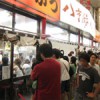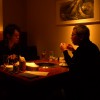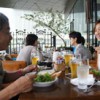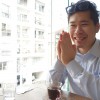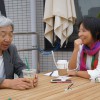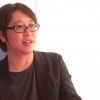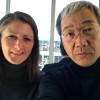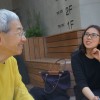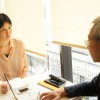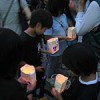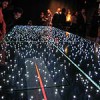Interviewer: Momoko Muraoka
Theme:The role of a designer
Muraoka: Today I would like to talk about the role of a designer. Of course, there is our regular work consulting on design projects, but also as lighting designers, we have helped launch a professional organization and are now engaged in recovery projects for the Great East Japan Earthquake. All of these extracurricular activities have started me thinking, and as a designer, I want to be more subjective to the value of production in the world. Mr. Mende, what do you think the role of a designer is?
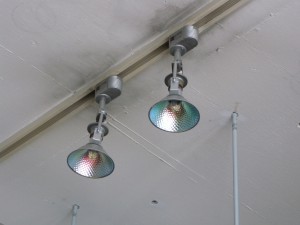
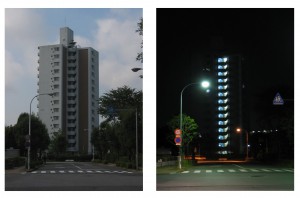
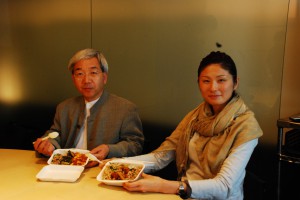
Mende: hmmm…That’s a good question. What do you think?
Muraoka: Well, this is a little idealistic, but to scoop up things that aren’t yet seen or noticed and mold them into a form that is helpful and makes everyone`s live just a little bit happier.
Mende: Yes, a designer might be a craftsman who makes people’s dreams and little bits of happiness a reality. A designer is an artisan and a thinker and simply put, a hostess or entertainer for society.
Muraoka: There are many different types of designers and a lighting designer might be particular in that there is really no solid form of our work.
Mende: But what about musicians or chefs there is no real solid form here, either. A massage or theatrics also makes people happy through healing or a performance. Is this design? Is good food a design?
Muraoka: Oh, well… I think all things that are subject to handling by someone could be called design.
Mende: Yes, maybe. What I wanted to say is that not all design is of a solid form. Sometimes the result of the design is not something we can see, but feel. Something that makes us more comfortable or relaxed or happy.
Muraoka: Yes, I think you`re right. It doesn’t necessarily have to be a solid form to make everyday life a little bit richer. Kind of like increasing pleasure sensory switches.
Mende: Light doesn’t have a solid form, but it is always present in the landscape or architecture or people’s lives, helping create a feeling of happiness or comfort or sometimes excitement. For this to work, it is important to critically observe the environment and surroundings and then gauge what would be the best lighting. In architectural lighting design, one needs to be able to gauge or estimate a variety of situations and surroundings. This is what makes the work so interesting.
Muraoka: Yes, we frequently have to deal with a variety of scales and objects while designing. While I was still a university student studying architecture, I used to take pictures of landscapes and buildings from various angles during the day and at night. Most of the pictures were very common, but the pictures of day and night were so very different! Naturally, sensory perception is different and the way light is shone on the landscape or a building also makes all the difference. I was taken aback by this discovery and found it very interesting. Each situation, each light fixture, and each wash of light changing just one element, and the whole picture would be different. This was a very interesting and poetic discovery for me. However, I didn’t know how to put this discovery to use as output in my own work. I would end up writing long descriptions for design homework. Very suicidal!! But I knew this is what I wanted to do. I, also, wanted to create inspiring light.
Mende: To design is not always to create something new. Estimating is also design. For example, just reducing bright lights to a suitable level is design.
Muraoka: Especially for projects using existing fixtures and such, paring down is very important work. This tests analytical and critical thinking skills!!
Mende: During the period I worked for a fixture manufacturer, I was asked to design a spotlight by interior designer, Shiro Kuramata. During our first meeting, he brought a spotlight and started playing with it and taking it apart. He kept asking “What is this?” Do we need this part?” “This isn’t important, is it?” Finally, all that was left were very minimal and basic parts of the fixture. Using this as a base, we designed a new fixture, part of the “K Series.” As you might guess, it was a very simple fixture. This was Mr. Kuramata`s estimation of design.
Muraoka: Wow, I didn’t know the story behind this series. A designer needs to be an estimation specialist and be able to gauge each situation for the best outcome to make everyone happy. I think I need to polish my estimation skills in order to become a better designer. Thank you for our talk today.





